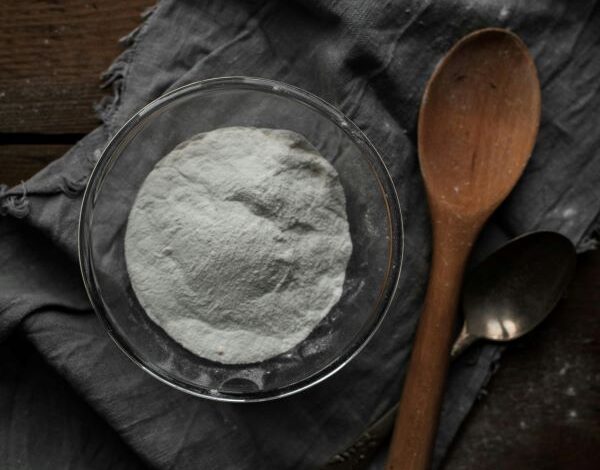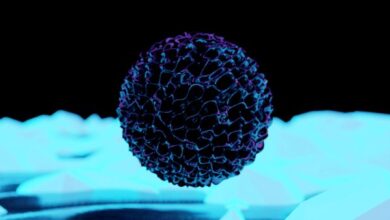Explore the benefits of rice flour as skin exfoliator

 Rice Flour is an organic, healthy and effective skincare ingredient that is affordable and suitable for all skin types. It has been used for centuries in traditional beauty rituals to exfoliate and brighten the skin and protect against ultraviolet (UV) rays. It is packed with vitamins, minerals and antioxidants that can work wonders for your skin.
Rice Flour is an organic, healthy and effective skincare ingredient that is affordable and suitable for all skin types. It has been used for centuries in traditional beauty rituals to exfoliate and brighten the skin and protect against ultraviolet (UV) rays. It is packed with vitamins, minerals and antioxidants that can work wonders for your skin.
This humble ingredient, commonly used in Indian kitchens, reduces excess oil, soothes irritation and gives you clear and glowing skin.
It is a superstar beauty product that has the power to cleanse your skin and moisturise it thoroughly. The antioxidants present in rice flour nourish and repair your skin. Incorporating rice flour face packs into your skincare routine will act as anti-inflammatory and antioxidant agents that function to prevent skin ageing, reduce UV damage, promote skin lightening, and improve skin and hair regrowth.
Rice flour is a magic ingredient that can make your skin soft, bright and supple, remove stubborn tan and get rid of discolouration or blemishes on the face.
Derived from every Asian’s staple food, rice flour is a skin saviour in every regard. Packing a punch with a blend of essential nutrients, the results of including rice flour face packs for glowing skin are incredible.
In oily skins, it helps to deep-cleanse the pores and keep them free of clogged oil, thus preventing problems like blackheads, pimples, and acne. It contains allantoin and antioxidants, which have many healing and soothing properties.
For centuries, rice powder has been used as a natural exfoliating ingredient manufactured from rice seeds. The grains from rice powder have been used to achieve clearer, smoother skin. Due to its spherical shape and size, rice powder gently polishes the skin without causing irritations.
Mix rice powder with curd and a pinch of turmeric and use it as a facial scrub. Apply to the face and rub gently on the skin with small circular movements. Wash off with water. Rice powder can also be added to Ubtan or body scrubs, along with gram flour, curd, rose water, powdered lemon, orange peels, etc.
Mix 3 tablespoons of milk powder with 5 tablespoons of brown rice flour. Blend in a tablespoon of olive oil (leave out if your skin is very oily). Stir in rose water gradually until you have a thick paste. Apply to the face, then allow to air dry for 10 to 15 minutes. Apply a bit of water to loosen up the mask, then gently rub it to exfoliate the skin. Rinse with fresh water and tone the skin.
Mix one tablespoon of rice flour, and one teaspoon each of oats and honey in a jar and add two teaspoons of milk to make of paste of smooth consistency. Apply this pack on your face and uncovered areas, allow it to dry naturally and wash off with lukewarm water.
Take two tablespoons of aloe vera and one tablespoon of rice flour. Mix to form a thick paste. Apply and let sit for 20 minutes. Rinse off and moisturise. This face pack works actively towards removing dead skin cells and all the impurities that clog the pores and contribute to damaged and dull skin.
Exfoliating with rice powder may be used in many other ways for beauty care. You can mix one teaspoon of rice powder with half a teaspoon of coconut oil and massage it into your skin on the face and neck for an anti-ageing treatment. This would be suitable for normal to dry skin.
Skin type should be kept in mind during exfoliation. Dry skin may be exfoliated only once a week. If there is any sensitivity, like dry rough and reddish patches, the skin should not be exfoliated. Exfoliation helps oily skin, as it refines the skin texture and helps to keep the pores free of clogged oil.
Those who have oily skin can use scrubs or cleansing grains two or three times a week. For blackheads, rice powder can be mixed with rose water and used. However, if there are pimples, acne or rash, scrubs should not be used on them.
Too much exfoliation, especially on dry skin, can lead to skin sensitivity. In such cases, avoid exfoliation for some time. A soothing cream may be applied. Sometimes cold milk may help to soothe the skin. If there is a rash, a little rose water can be mixed with sandalwood paste and applied. If there is any itching, it should be referred to a dermatologist.
After exfoliation, tone the skin with rose water or a rose-based skin tonic. A cold compress with chilled rose water or skin tonic may be given using cotton wool. Then a protective cream should be applied. If the skin is dry, a moisturiser should be applied. If one is going out in the sun, apply sunscreen after exfoliation.




